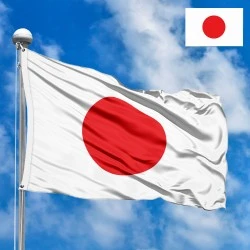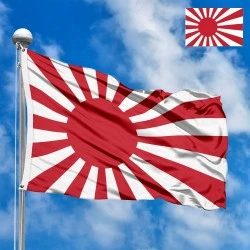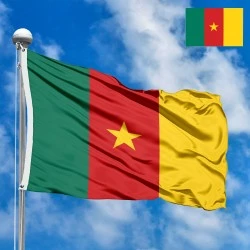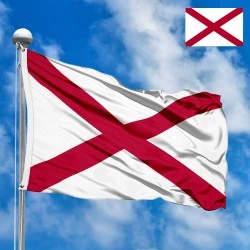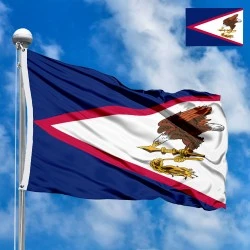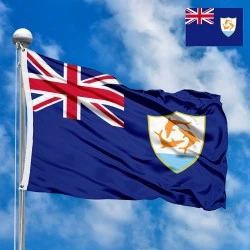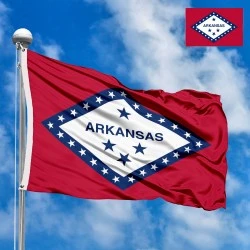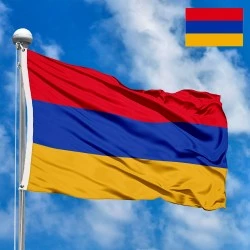- All Flags
- Flags of Countries by Continent
-
Flags of Organizations
- Flags of UN countries
- Flags of the European Union countries
- Flags of NATO countries
- Flags of the countries of the Organization of Islamic Cooperation
- Flags of the countries of the Organization of American States
- Flags of the Arab League countries
- Flags of the African Union countries
- Flags of the countries of the Union of South American Nations
- Flags of the Commonwealth of Nations
- Flags of the countries of the Secretariat of the Pacific Community
- Flags of the Nordic Council countries
- Flags of the Caribbean Community
- Flags of the countries of the Association of Southeast Asian Nations
- Flags of the East African Community
- Flags of the countries of the Organization of Turkic States
- LGBT Community Flags
- Historical Flags
- Ethnic Flags
- Flags of the USA (states)
Description
The Imperial Japanese Army Flag, often recognized as the Rising Sun Flag (Kyokujitsu-ki), is a deeply symbolic and, for many, controversial emblem. While visually similar to the naval ensign, this version was primarily associated with Japan's ground forces and their actions during a period of significant imperial expansion. It carries immense historical weight, evoking different emotions and interpretations depending on one's historical perspective.
Dimensions, Colors, and Arrangement of Elements
The Imperial Japanese Army Flag is characterized by its distinctive and powerful design.
-
The flag features a red sun disc from which sixteen red rays emanate, extending outwards to the edges of the flag. This design is widely known as the "Rising Sun with Sixteen Rays."
-
Crucially, for the Army's flag, the sun disc is typically centered on the flag, in contrast to the naval version where it's offset. This central placement gives the flag a sense of static power and dominance.
-
The color palette is simple yet highly evocative:
-
Red: The red of the sun disc and its radiating rays represents the brilliance of the sun, a central motif in Japanese mythology linked to the sun goddess Amaterasu Ōmikami, believed to be the ancestor of the Imperial family. It also profoundly symbolizes energy, passion, courage, and the sacrifices made for the nation.
-
White: The stark white background of the flag embodies purity, honesty, and integrity. It provides a vivid contrast to the dynamic red, making the design stand out prominently.
-
History of the Flag's Creation and Adoption
The genesis of the Imperial Japanese Army Flag is intrinsically tied to Japan's rapid modernization following the Meiji Restoration and its transformation into a formidable military power.
-
Ancient Roots and Early Forms: The concept of a "rising sun" with rays has ancient origins in Japanese culture and artistic representation. Various forms resembling the future flag existed during the feudal Edo period, used by different daimyo (feudal lords) and samurai clans as battle standards.
-
Formal Adoption by the Imperial Japanese Army (1870): The sixteen-ray version of the Rising Sun Flag was officially adopted by the newly formed Imperial Japanese Army on May 15, 1870, as its war flag (rikugun-ki). This adoption was a deliberate move to create a modern, unified military symbol that could rival those of Western powers, reflecting Japan's ambitions on the global stage. It marked a clear break from older feudal banners and established a standardized emblem for the rapidly professionalizing army.
-
Prominent Use During Imperial Expansion (Late 19th Century - World War II): This flag became the most visible symbol of the Imperial Japanese Army throughout its extensive campaigns. It was flown with immense visibility during:
-
The First Sino-Japanese War (1894-1895), which established Japan as a regional power.
-
The Russo-Japanese War (1904-1905), where Japan's decisive victory shocked the world.
-
The annexation of Korea (1910).
-
The invasion of Manchuria (1931) and the subsequent establishment of Manchukuo.
-
And most significantly, throughout World War II (1939-1945), where it was extensively displayed across occupied territories in East and Southeast Asia, becoming synonymous with Japanese military occupation and aggression.
-
-
Post-World War II Discontinuation: Following Japan's defeat in World War II and the subsequent demilitarization under Allied occupation, the Imperial Japanese Army was dissolved. Consequently, the official use of the Rising Sun Flag as a national military symbol ceased.
-
Re-adoption by the Japan Ground Self-Defense Force (1954 - as a Regimental Flag): In 1954, with the establishment of the Japan Self-Defense Forces (JSDF), a modified version of the Rising Sun Flag was adopted. The Japan Ground Self-Defense Force (JGSDF) began using a similar design, though often with fewer rays or as a distinct "regimental flag" (rentai-ki), rather than a general war flag. It is important to note that while the Maritime Self-Defense Force uses a very similar flag as its naval ensign, the JGSDF's use is more localized and less prominent as an overarching symbol compared to its historical use by the Imperial Army.
Symbolism and Meaning for Residents
The Imperial Japanese Army Flag carries profoundly different meanings for people, varying drastically between Japan and the nations that experienced Japanese occupation and aggression.
-
For Many in Japan (Particularly within JGSDF and Conservative Circles):
-
National Pride and Tradition: For many Japanese, especially those associated with the JGSDF and conservative political groups, the flag embodies national pride, tradition, and a connection to Japan's military heritage. They see it as a symbol of historical continuity and the disciplined strength of their nation's armed forces.
-
Cultural Significance: It's often viewed through the lens of its deep cultural roots in Japanese mythology and the veneration of the sun. From this perspective, it's a traditional emblem of Japan, no more inherently aggressive than any other nation's military standard.
-
Patriotism: For some, it represents patriotism and a respectful acknowledgement of those who served in the past, without necessarily endorsing the aggressive actions of the wartime regime.
-
-
For Many in East Asian Countries (e.g., South Korea, China, Philippines):
-
Symbol of Imperialism and Atrocities: In countries that endured brutal Japanese occupation and wartime atrocities, the Imperial Japanese Army Flag is almost universally perceived as a symbol of Japanese imperialism, militarism, and unspeakable wartime crimes. It instantly evokes painful memories of colonial oppression, forced labor, massacres, and other human rights abuses.
-
"Flag of Hate" / "War Criminal Flag": For many in these nations, it is unequivocally seen as a "flag of hate" or a "war criminal flag," analogous to the Nazi swastika in Europe. Its display is often met with intense anger, condemnation, and diplomatic protests, interpreted as a sign of Japan's lack of remorse for its historical actions.
-
Historical Insensitivity: Its continued use by parts of the JSDF is frequently criticized as an act of profound historical insensitivity and a failure to acknowledge the suffering inflicted during the war.
-
-
Divided Opinion Within Japan:
-
Even within Japan, public opinion is divided. While some embrace it as a symbol of heritage, a significant portion of the population, particularly younger generations and those with pacifist leanings, recognize its controversial nature and the deep offense it causes abroad. They often prefer the exclusive use of the Hinomaru as the national flag.
-
Interesting Facts
The Imperial Japanese Army Flag is a symbol rich in history and laden with complex interpretations, making it a subject of continuous discussion and sensitivity.
-
Distinct from the National Flag: It is crucial to remember that this flag is distinct from Japan's national flag, the Hinomaru (日の丸, "sun disc"), which features a single red disc on a white background. The Hinomaru represents the nation as a whole, while the Rising Sun Flag was, and to some extent remains, a military emblem.
-
Central Sun vs. Offset Sun: The primary visual difference between the Army's Rising Sun Flag and the Navy's ensign lies in the placement of the sun disc. The Army's flag had the sun centered, while the Navy's was offset towards the hoist (left side) to imply movement through water.
-
"Land of the Rising Sun": The sun motif itself is deeply ingrained in Japanese identity, stemming from the nation's name, Nihon (日本), which literally means "origin of the sun." This cultural connection is a key part of the argument made by those who defend the flag's use as a traditional symbol.
-
Enduring Controversy: The flag remains a source of ongoing international controversy, particularly in East Asia. Sporting events, international military exercises, or cultural displays involving the flag often trigger strong protests and diplomatic incidents.
-
Historical Weight: It represents a period of immense suffering and trauma for millions across Asia. The flag's appearance immediately conjures images of Japanese occupation, wartime atrocities, and colonial exploitation for those who experienced or inherited memories of that era.
-
Legal Status in Japan: In Japan, the Rising Sun Flag is not officially banned and is viewed by the government as part of the JSDF's legitimate emblems. However, its use outside military contexts, especially in public spaces or by right-wing nationalist groups, can be highly provocative.
-
Comparison to Swastika: The analogy of the Rising Sun Flag to the Nazi Swastika, frequently drawn by critics in countries like South Korea, underscores the profound level of historical pain and moral outrage associated with the symbol. This comparison highlights the flag's role as a potent reminder of crimes against humanity.
-
Variations in Design: Over time, there were minor variations in the precise design of the Rising Sun Flag used by different units or for specific purposes within the Imperial Army, though the core "sixteen rays from a sun" motif remained consistent.
-
Post-War Taboo (in some regions): While acceptable in Japan for military use, the flag remains a taboo symbol in many parts of Asia, and its display can be seen as an act of aggression or revisionism.
In the demonstration images, full-size flags are shown with proportions of 2:3, and hand-held flags with proportions of 1:2.
Donation
Download
Completely free for commercial and non-commercial use (public domain).
You can freely use them in your news magazines, websites, software, mobile applications.
We appreciate a backlink to https://flagssite.com
Raster files - Flag of the Imperial Japanese Army (PNG, JPG)
 Waving flag
Waving flag
- PNG format (transparent background), 72dpi, dimensions in Pixels (px), aspect ratio 3:4.
- 15х20 px
- 30х40 px
- 60х80 px
- 120x160 px
- 240x320 px
 Sizes:
Sizes:
"v15" - image size (by height); if necessary, replace with available: v15, v30, v60, v120, v240.
!!! For resizing, use the Latin (eng) keyboard layout.
<img src="https://flagssite.com/flags/v15/20356.png" alt="Flag of the Imperial Japanese Army">
 Round flag
Round flag
- PNG format (transparent background), 72dpi, dimensions in Pixels (px), aspect ratio 1:1.
"d15" - image size (diameter); if necessary, replace with available: d15, d30, d60, d120, d240.
!!! For resizing, use the Latin (eng) keyboard layout.
<img src="https://flagssite.com/flags/d15/20356.png" alt="Flag of the Imperial Japanese Army">
 Rectangular flag 2:3
Rectangular flag 2:3
- JPG format, 72dpi, dimensions in Pixels (px), aspect ratio 2:3.
"h30" - image size (by height); if necessary, replace with available: h15, h30, h60, h120, h240, h360, h480.
!!! For resizing, use the Latin (eng) keyboard layout.
<img src="https://flagssite.com/flags/h30/20356.jpg" alt="Flag of the Imperial Japanese Army">


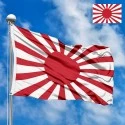
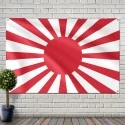
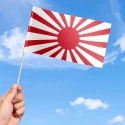
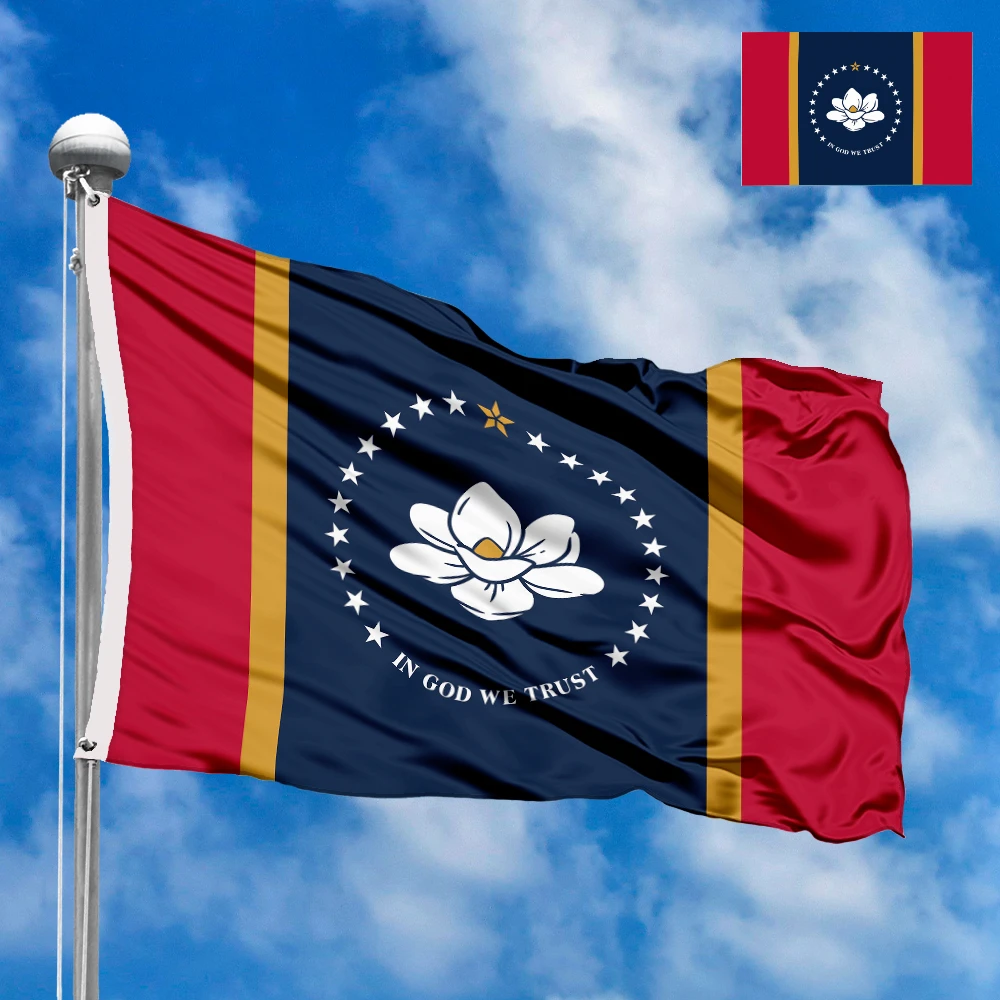

 Sizes:
Sizes:
 Sizes:
Sizes:
